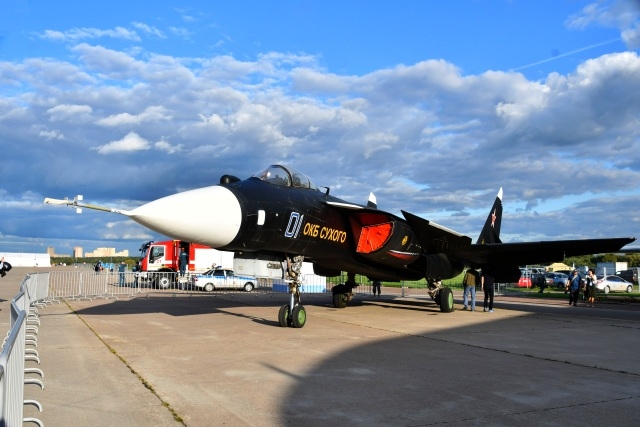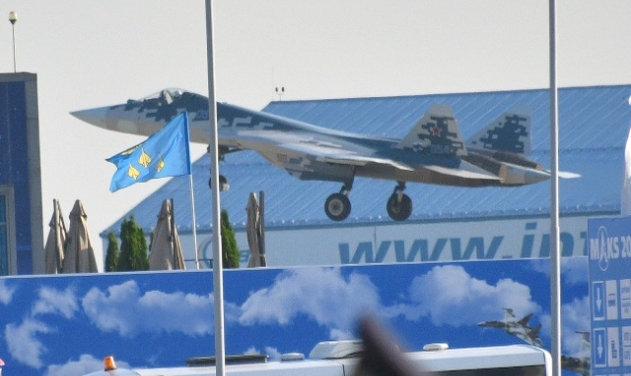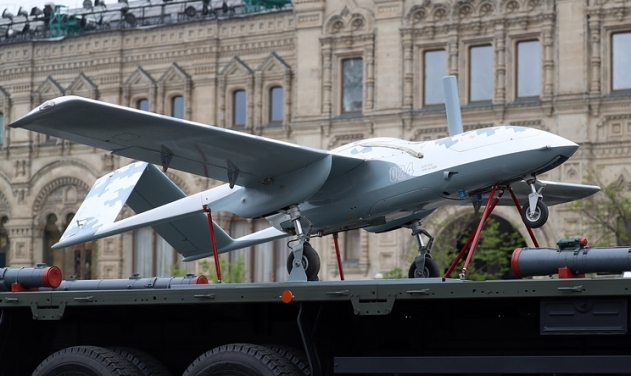Quirky Russian Missile Carrying Plane Headed for Public Display

One of the quirkiest aircraft in the world, the Russian MD-160 also called ‘ekranoplan’ was towed to the Russian city of Derbent last week where it will form a permanent exhibit at the upcoming ‘Patriot Park’ exhibition center.
The aircraft is one of a kind- designed in 1986 with its unique feature being six missile tubes placed on top of its fuselage. Its purpose was to sneak up upon enemy aircraft carriers from under their radar coverage and lob missiles before the enemy vessel’s defenses could react.
Designed by the Soviet Union during the latter stages of the Cold War as a high-speed anti-ship missile aircraft, its unusual design makes it looks like a spaceship from Star Wars.
It is now going on display at Patriot Park in the city of Derbent in Russia's semi-autonomous republic of Dagestan when it is opens to public later this year.
The Russian Ministry of Defense’s TV channel reported on July 31, 2020 that the ‘ekranoplan,’ had arrived in Derbent, Dagestan after a 14-hour journey south from the Russian Navy's base in Kaspiysk, which is also in Dagestan. The aircraft has been out of service since the late 1990s. It took a day to prepare the craft, which is non-operational at present, for the trip and a tug towed it to its new home.
The MD-160’s construction began in 1986 and completed in 1991. It is never known to have flown a combat mission. It was powered by eight Kuznetsov NK-87 turbofan engines, each with a maximum thrust rating of 28,600 pounds, mounted in two banks of four engines on each side of the forward fuselage.

A second aircraft, called the ekranoplan rescuer was built but did not make it out of the plant in Kaspiysk. It still present there in a mothballed condition. Plans were made in the 90s to covert the second ekranoplan into a search and rescue vessel. This is how the term ‘rescuer’ appeared, But in the turmoil of the 90s Russia, work frozen at 75% of the ship's readiness.
Following the collapse of the Soviet Union, plans to build seven more MD-160s were scuttled. The only flying aircraft was transferred to the Caspian Sea Flotilla but remained largely unused and is never known to have been deployed even in exercises.
The ekranoplan aircraft, part of the Lun class warplanes featured six P-270 Moskit anti-ship missiles, NATO codenamed as the SS-N-22 Sunburn. These missiles were mounted in pairs on top of the central fuselage elevated at an angle of about 30 degrees. A large surface search radar was installed in the tail. Their purpose was to launch high-speed attacks on large hostile surface warships such as aircraft carriers.
The aircraft measured 73 meters, the wingspan is 44 meters. The speed reached 500 km per hour, and the cruising range - up to 2000 km. The maximum take-off weight was 380 tons.













